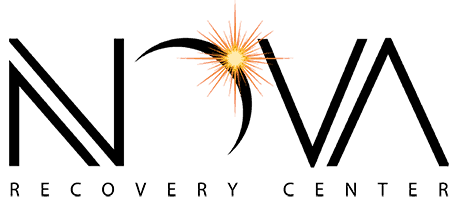What Are The Benefits of Long-Term Residential Care?
Last Updated on August 17, 2023

If you want to overcome addiction and are contemplating what type of treatment can give you the optimal chance for an effective and lasting recovery, experts say that long-term residential drug rehab is the best choice. That’s based on statistics, not guesswork.
The American Society of Addiction Medicine says addiction is a “primary, chronic disease of brain reward, memory, motivation, and related circuitry.”1 Characterized by an inability to abstain from alcohol and/or drugs, addiction also results in behavioral control impairment, cravings, inability to recognize problems with work, school, and interpersonal relationships, and significantly diminished emotional response.
Another characteristic of addiction, like other chronic diseases, is that it typically follows a pattern of treatment, relapse, and remission. An addiction that’s left untreated and lacking participation in recovery activities such as self-help or 12-step groups can result in a severe downward spiral, culminating in disability or premature death.
Just as it takes time to develop the unhealthy thought and behavior patterns associated with addiction, it takes time to re-learn new, healthier ways of thinking and behaving. Long-term addiction treatment is almost always needed to overcome addiction and ensure ongoing successful recovery.
Finding a Way Back from Addiction
While the statistics about addiction are startling – some 23.5 million people in the U.S. need drug or alcohol treatment, yet only about 2.6 million get the specific treatment they need – addiction needn’t be a death sentence. There is help available and solid, results-proven treatment that can help a person find his or her way back from addiction.
The familiar form of treatment for addiction to drugs, alcohol or other substances of abuse, including prescription drugs, involves a 30-day stay in an inpatient or residential rehab facility. While short-term (30-days) treatment is effective for some individuals, for those with chronic addiction, individuals diagnosed with substance use disorder and a mental health issue, a better alternative is long-term residential care of longer than 30 days, typically six to 12 months.2
Indeed, per the National Institute on Drug Abuse (NIDA), good outcomes from drug addiction treatment are “contingent on adequate treatment length.”3
Long-Term Rehab vs. Detox: What’s the Difference?
Ridding the body of toxic substances, a process known as detoxification or detox, alone will not solve the problem of addiction. It is a necessary first step, however, and should take place in a licensed facility with 24/7 medical supervision and care. Following drug detox or alcohol detox, an assessment and either referral to a treatment facility or transitioning from detox to formal treatment with an individualized treatment plan is the preferred route to recovery.
Long-term residential care facilities are often referred to as therapeutic communities.4 It’s this healing aspect and interaction between staff and clients that fosters both motivation and adoption of skills that can form the foundation for lasting recovery. Residents of inpatient drug rehab centers learn about the disease of addiction, receive individual and group counseling, learn to identify and cope with triggers and cravings, receive relapse prevention, are introduced to 12-step groups, participate in healthy lifestyle activities and more. In this, care in a long-term rehab center is like short-term rehab. Both cover the same essential ground in addiction treatment.
Where long-term residential care differs is in the breadth, length, and scope of treatment. During treatment, residents will examine long-held and mistaken beliefs, challenge destructive self-concepts and examine behavior that’s contributed to their addiction. Since this takes place in a highly-structured environment, the issues and emotions that surface can be confrontational. This, however, is a necessary part of learning to manage the disease of addiction, as it involves the acceptance of and practicing constructive behavior and healthier ways of coping with life’s everyday stressors.
Long-Term Treatment vs. Short-Term Treatment for Addiction
Today long-term treatment is considered to be one of the contributing principles that determine whether treatment is effective. Many people who struggle with long-term substance abuse need 90 days or more in a rehab facility to achieve the best results.5 Spending this amount of time in treatment will significantly reduce or stop their drug use.
For those who are already on the path to recovery and who are looking for support after intensive care, short-term treatment, or outpatient treatment programs, are a viable option. Within these programs, the patient does not stay within the facility but meets a couple times a week in a safe and comfortable setting. The program allows for accountability in sobriety and helps the patient re-discover social skills and learn how to live within their new sober lives.
What Are the Benefits of Long-Term Drug Rehab?
In addition to the all-important factor of higher success rates for recovery, other key benefits of long-term rehab include:6,7
- A drug and alcohol-free environment for an extended period of time
- Time to break the cycle of relapse and dependence
- Time for the body to heal physically
- Structured daily schedule
- Supervision and support
- Sober peers and accountability
- Family treatment and education programs
- Consistent monitoring to track progress and modify the treatment plan as needed
- Medical, social, and psychiatric services to address co-occurring disorders
- Guidance in building self-confidence, self-efficacy, and life skills for ongoing sobriety
- Intensive interventions and treatment modalities to address dual diagnosis, medical conditions, or criminal involvement
- Assistance connecting with formal aftercare and community self-help groups after rehab8
How Long Does Long-Term Addiction Treatment Last?
Residential treatment programs typically last for 30 to 90 days. Long-term addiction treatment is defined as a program that lasts 90 days or longer. The National Institute on Drug Abuse notes that there is no predetermined length of time that’s recommended for addiction treatment since individuals progress through treatment at their own rate.8 But the organization stresses that for residential or outpatient treatment, anything less than 90 days has limited effectiveness. Treatment that lasts considerably longer is recommended for the best possible positive outcomes.
What Happens During Long-Term Addiction Rehab?
During long-term addiction rehab, clients work with staff and peers in recovery to achieve several different skills and objectives that will help them maintain their sobriety on a long-term basis. These skills include:
- Developing solid coping strategies and relapse prevention techniques to deal with stressors and triggers
- Tackling underlying issues that are related to the addiction or that contribute to it
- Taking time to heal and balance brain chemistry to reduce drug cravings
- Mending broken relationships with family and friends
- Building healthy relationships with others in recovery
- Developing life skills that will aid in the functional return to employment and society
Generally speaking, clients enrolled in long-term residential drug treatment programs adhere to a structured daily schedule comprised of individual and group counseling, 12-Step Program work, meal time, exercise time, personal time, and meditation to learn how to establish a balanced life of sobriety.
Who Needs Long-Term Addiction Treatment?
Long-term residential addiction treatment can work well for anyone, regardless of his or her circumstances, drug history, or previous experiences with addiction treatment. If you’re considering enrolling in long-term residential treatment for drug addiction, the amount of time you will need to spend in rehab depends on several different things, including:
- The severity of your addiction
- Whether or not you need to detox first
- Your insurance coverage, EAP benefits, or your ability to pay out-of-pocket
- Co-occurring disorders that also need to be treated
Some populations may benefit from long-term residential drug rehab, such as people who struggle with chronic relapse, people who have been addicted to drugs or alcohol for several years, or people who have already completed shorter stints in rehab.
The best way to find out if long-term residential treatment is for you is to complete the screening process with a long-term addiction treatment center of your choice.
What Factors Make Long-Term Residential Treatment Effective?
Although there are many different long-term treatment centers for addiction, the majority of which promise high-quality care, there are five essential factors for effective long-term residential treatment.
- The staff – An experienced and committed staff is the foundation of a high-quality long-term residential treatment program. The staff’s ability to connect with patients and be a source of understanding, support, and guidance is essential to an addiction treatment program that works.
- Treatment methods – Research supports the idea that certain addiction treatment methods are extremely beneficial and effective for people in recovery. One study from the Psychiatric Clinics of North America found addiction treatment programs that use cognitive behavioral therapy, contingency management, motivational interviewing, and medications such as methadone or buprenorphine for alcohol and opioid addiction are generally more effective.10
- Presentation of the facility – The overall presentation of a long-term treatment center for addiction can go a long way to make a client feel less anxious and depressed, and instead, foster feelings of encouragement and make the client feel welcome and at home.
- Facility amenities – A high-quality residential treatment center should provide amenities that foster personal growth, privacy, accountability, and comfort. For example, this may include a clean and welcoming living environment, separate living spaces for men and women, and designated areas for physical fitness and yoga and meditation.
- Longer durations of treatment – Although 90 days is the minimum amount of time required for a program to be considered a long-term addiction treatment program, many facilities offer treatment for as long as the client needs, whether that’s three months or five months. Many long-term residential drug treatment programs also offer continued support after rehab, connecting clients with community support groups, sober living homes, or formal aftercare treatment.
Long-Term Addiction Treatment Transforms Lives
Long-term recovery from addiction is possible and addiction treatment isn’t just about ending an addiction. It’s about helping you resolve the complex underlying issues that led to the addiction. It’s about helping you find true purpose and meaning in your life and regain a sense of joy and fun without the need for drugs or alcohol.
Both traditional and complementary treatment therapies are used in a high-quality long-term addiction treatment program to approach problem-solving from a variety of angles. This holistic approach is the best way to treat addiction since no single treatment works for every individual.11
What Happens After Long-Term Residential Rehab?
A long-term addiction treatment program is designed to help you change negative patterns of thinking and behaving and develop the skills, strategies, and techniques you need to reduce stress, combat cravings and cope with other powerful triggers to improve your chances of successful recovery. But once you’re finished with treatment, you’ll likely still need support, and an aftercare plan will be put in place to help you stay on the road to recovery during the early months and years of abstinence.
If you’re looking for long-term addiction treatment in Texas, call Nova Recovery Center today to learn about our continuum of care that carries clients through the entire treatment process, from detox to aftercare.
References:
- http://www.asam.org/quality-practice/definition-of-addiction
- https://www.drugabuse.gov/publications/principles-drug-addiction-treatment-research-based-guide-third-edition/drug-addiction-treatment-in-united-states/types-treatment-programs
- https://www.drugabuse.gov/publications/principles-drug-addiction-treatment-research-based-guide-third-edition/frequently-asked-questions/how-long-does-drug-addiction-treatment
- https://www.drugabuse.gov/publications/research-reports/therapeutic-communities/what-are-therapeutic-communities
- https://www.drugabuse.gov/publications/principles-drug-addiction-treatment-research-based-guide-third-edition/acknowledgments
- https://www.ncbi.nlm.nih.gov/pubmed/11015800
- https://www.drugabuse.gov/publications/principles-drug-addiction-treatment-research-based-guide-third-edition/frequently-asked-questions/what-helps-people-stay-in-treatment
- https://www.drugabuse.gov/publications/research-reports/therapeutic-communities/what-therapeutic-communitys-approach
- https://www.drugabuse.gov/publications/principles-drug-addiction-treatment-research-based-guide-third-edition/frequently-asked-questions/how-long-does-drug-addiction-treatment
- https://www.ncbi.nlm.nih.gov/pmc/articles/PMC3678283/
- https://www.samhsa.gov/recovery
Image used under license from Shutterstock.com

